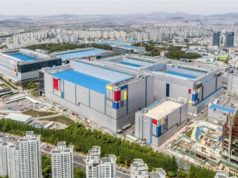Manufacturers since the second quarter have significantly raised mobile and server DRAM outputs and scaled back PC DRAM shipments, according to DRAMeXchange.
Signs of a recovery in the laptop/notebook market, robust smartphone shipments and growing demand for servers all have played big parts in creating higher-than-expected demand for memory components here in the second half of 2016.
Thus, prices of both DRAM (dynamic memory) and NAND Flash are projected to rise in the fourth quarter, and DRAM contract prices in particular will post another sequential increase of more than 10 percent. This is all according to DRAMeXchange, a division of TrendForce, which specializes in analyzing the DRAM market and released its quarterly report Sept. 6.
The next 12 to 18 months also look good for higher prices. DRAMeXchange also believes the DRAM market outlook will be positive going into 2017 as supply continues to tighten for desktop PC DRAM.
The memory market this year has benefited from exceptional shipment results from Chinese smartphone brands and expanding server shipments caused by growing data center demand in China, DRAMeXchange said. Server orders going to Taiwan-based OEMs in the second half of 2016 have increased by almost 20 percent on average versus the year’s first half.
In response to shifting market demand, DRAM manufacturers since the second quarter have significantly raised mobile and server DRAM outputs and scaled back their PC DRAM shipments, DRAMeXchange said.
“Mobile DRAM is expected to make up nearly 45 percent of the global DRAM shipments this fourth quarter while the share of server DRAM will exceed 25 percent,” said Avril Wu, research director of DRAMeXchange. “PC DRAM by contrast will constitute less than 20 percent of the entire fourth-quarter shipments.”
On the other hand, demand for notebooks has picked up in North America in the third quarter, and major brands HP and Dell have increased their respective notebook shipments by more than 8 percent sequentially.
Contract prices of 4GB PC DRAM modules (DDR3 and DDR4) have now stabilized at $13.50 on average as supply tightens. In the fourth quarter, DRAM makers will continue to expand mobile DRAM output at the expense of PC DRAM production, DRAMeXchange said.
Additionally, demand is outpacing supply in the NAND Flash market during the third quarter. The stock-up demand generated by Apple and Chinese smartphone brands such as Huawei, Vivo and OPPO has been greater than anticipated and is consuming a huge part of the overall production capacity for planar NAND Flash.
NAND Flash manufacturers have fallen behind in their schedules for the transition to the 3D-NAND technology. As supply tightens in the third quarter, the demand for enterprise-grade SSDs and the penetration of notebook SSDs are growing rapidly. All these have caused a gap between supply and demand in the NAND Flash market during this period, DRAMeXchange said.
Due to OEM demand and challenges related to technology migration, major NAND Flash suppliers such as Samsung, Toshiba, SanDisk and Micron have significantly reduced their shipments to memory module makers.






